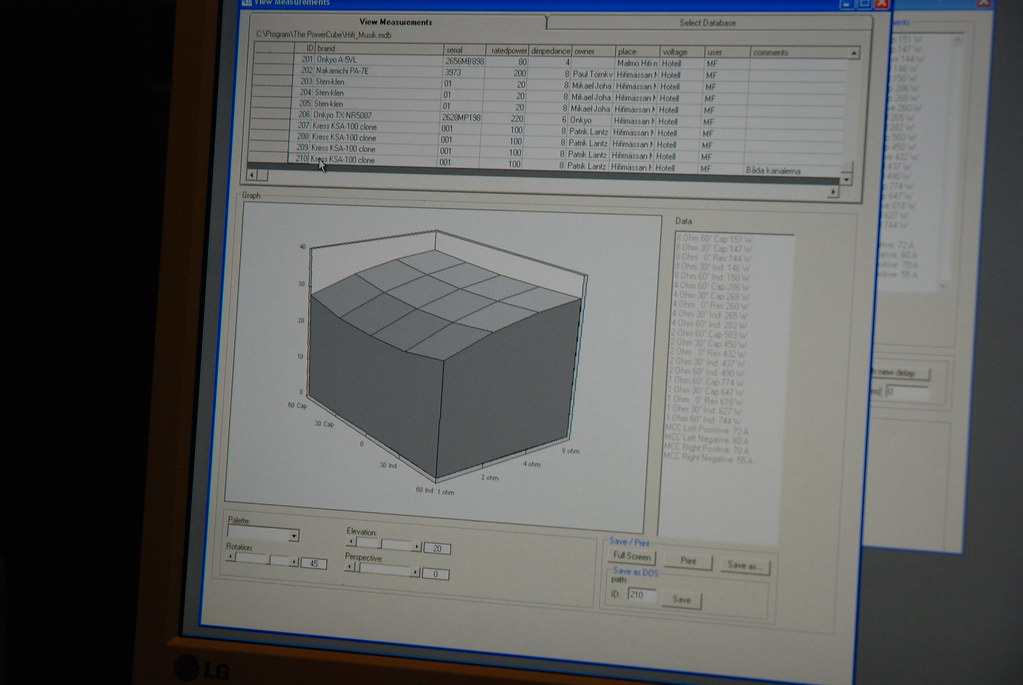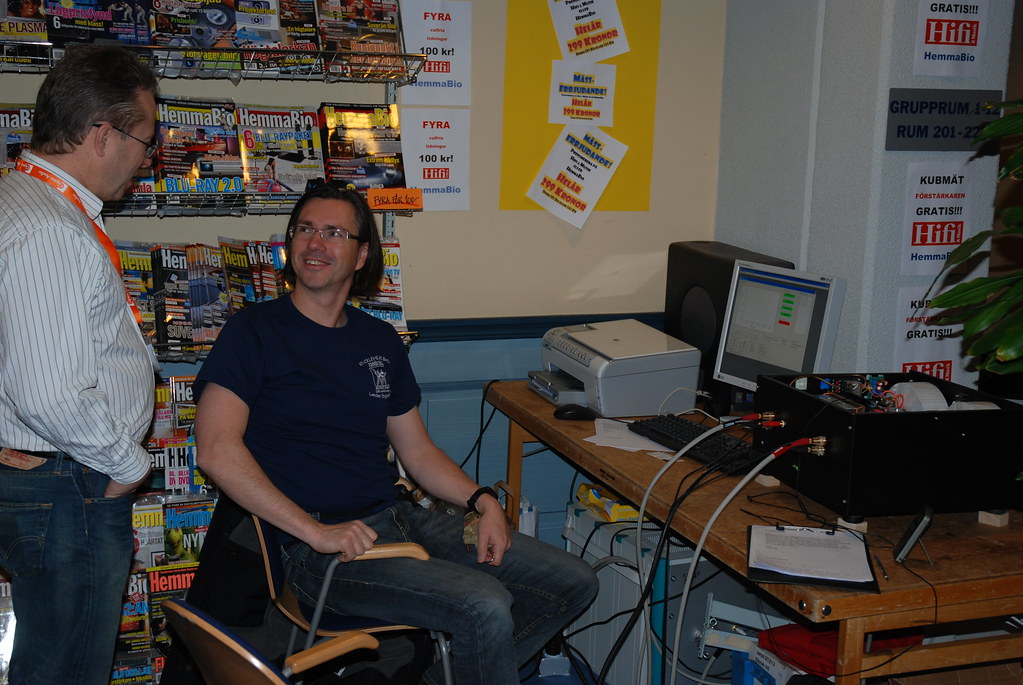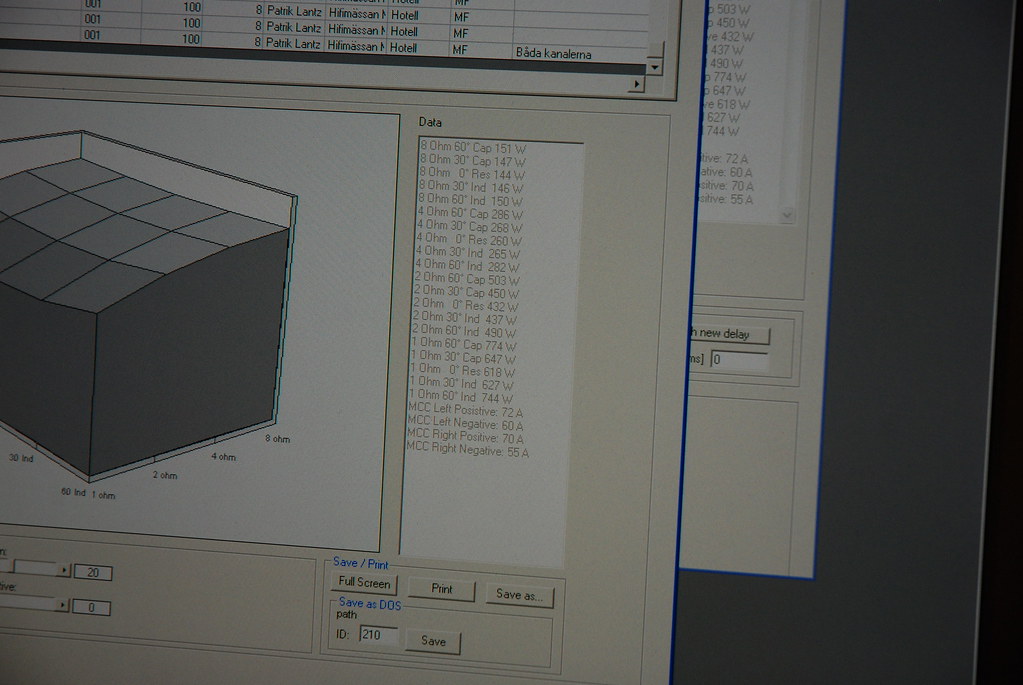If you go back in the archives (think around October 2007) I posted some spectra and other measurements. Didn't log any bias tests, but what I found was that higher bias made the THD vs. power more consistent. Going too high just made matters worse because the 50Hz harmonics increased from the power supply taking too much strain. That's why ideal bias will have to be individually tuned according to the power rating & regulation specs of the transformer, capacitor size and quality, number of output transistors and bias of each of them (more devices = less bias each) etc. etc. etc.
So chances of getting optimal results between amps with the same bias is fairly slim, everyone will have to tune by ear which is quite tedious as each bias adjustment takes a while to settle.
Those with measurement gear (a good soundcard should be OK with THD measurements alone), increase the bias into full load until the distortion starts rising and back it off a little as a starting point.
So chances of getting optimal results between amps with the same bias is fairly slim, everyone will have to tune by ear which is quite tedious as each bias adjustment takes a while to settle.
Those with measurement gear (a good soundcard should be OK with THD measurements alone), increase the bias into full load until the distortion starts rising and back it off a little as a starting point.
I never took the 50hz vs 60hz into consideration when all this started. Countries with 60hz power are going to get more oomph out of their trannys for sure!!
I have an H-P 3580A spectrum analyzer so at some point down the road I might set it all up and take a look at the distortion spectra of the Sound Technology analyzer as compared to bias level. I generally set up commercial amps (QSCs and Crowns) that I rebuild this way. With the KSA-100 there has got to be some correlation between bias level and distortion spectra content up to a certain point but probably not past a certain bias point. What I had in mind was if at certain bias levels the amp could be tuned for higher even or odd harmonics and so on... and this would make a definite difference in how the amp sounds...
Mark
I have an H-P 3580A spectrum analyzer so at some point down the road I might set it all up and take a look at the distortion spectra of the Sound Technology analyzer as compared to bias level. I generally set up commercial amps (QSCs and Crowns) that I rebuild this way. With the KSA-100 there has got to be some correlation between bias level and distortion spectra content up to a certain point but probably not past a certain bias point. What I had in mind was if at certain bias levels the amp could be tuned for higher even or odd harmonics and so on... and this would make a definite difference in how the amp sounds...
Mark
The load and implementation also has an impact. The KSA100 was intended for demanding loads but with today's typical impedances even much lower bias should not really sound any different. You need to consider for a typical listening level how much of the signal will be in class-A. Ideally you want the bias to be that the negative peak of the signal swing is on the edge of class-A. Anything more is just wasted power and a step backwards due to the increased mains distortion. Since 100W class-A is fairly taxing and most builders' speakers are normal 6ohm loads with 88-91dB efficiency I would wager that 70W class-A should sound just as good as 100W.
Thank you PWatts and Mark for the kind words...
Been using the amp for atleast over 200h now, and it works flawless...
Sure I did build slow just to get everything correct, and used oversized wires if unsure etc.
Did test every part before building more parts...
After all these months of listning I'am still amazed how good the amp sounds.
The sound quality is good as I hoped for...
Next spring there is a DIY-Gathering in Sweden were I plan to bring the amp so other DIY'er can look and listen...
It would be cool if there is more people jumping on this project.
I've saved most of my pre-work so you can save time building.
If I get some spare time I'll try to put down all in a .zip file
Send me PM/Mail if you want more info.
- - - -
About BIAS Setting...
When the Bias were are ~500mv I thought the sound were flat, no deep bass etc.. Dull sounding... And I didn't know the bias were this low... I could hear it sounded crap.. ( so after two weeks I did measure the bias and it was too low, soon as I raised the value to ~625mv the magic sound came back, and ever since then I'm more than happy with the sound...
Now I have Infinity IRS Sigma speakers and need lots of power... Perfect match..
- - - -
What happend to the Wikipages ???
Been using the amp for atleast over 200h now, and it works flawless...
Sure I did build slow just to get everything correct, and used oversized wires if unsure etc.
Did test every part before building more parts...
After all these months of listning I'am still amazed how good the amp sounds.
The sound quality is good as I hoped for...
Next spring there is a DIY-Gathering in Sweden were I plan to bring the amp so other DIY'er can look and listen...
It would be cool if there is more people jumping on this project.
I've saved most of my pre-work so you can save time building.
If I get some spare time I'll try to put down all in a .zip file
Send me PM/Mail if you want more info.
- - - -
About BIAS Setting...
When the Bias were are ~500mv I thought the sound were flat, no deep bass etc.. Dull sounding... And I didn't know the bias were this low... I could hear it sounded crap.. ( so after two weeks I did measure the bias and it was too low, soon as I raised the value to ~625mv the magic sound came back, and ever since then I'm more than happy with the sound...
Now I have Infinity IRS Sigma speakers and need lots of power... Perfect match..
- - - -
What happend to the Wikipages ???
Last edited:
I've got an opportunity to make professional measurements of my Krell Klone by the guys at Hifi & Musik ( Swedish Hifi Magazine )
It's called Powercube, and you can see how it behaves in different ohm, etc etc...
How much Power you have in 1,2,4,8 Ohm....
It tells you if the Amp is well constructed, and hint of what kind of speakers it can handle...
Normally you can't do this for free, or it costs lots of money...
I'll post a full report with Pictures soon as I can....
So the question is: Did it measure well, or was it the worst amplifier they seen ?
It's called Powercube, and you can see how it behaves in different ohm, etc etc...
How much Power you have in 1,2,4,8 Ohm....
It tells you if the Amp is well constructed, and hint of what kind of speakers it can handle...
Normally you can't do this for free, or it costs lots of money...
I'll post a full report with Pictures soon as I can....
So the question is: Did it measure well, or was it the worst amplifier they seen ?
Audiograph - Home of the PowerCube
Please read more at this page, to understand better.
This is the machine that I have measured on...
Stay tuned for results...
It will reveal if the construction is bad or is in balance, it won't tell you how it sounds but a good cube will handle any load...
Please read more at this page, to understand better.
This is the machine that I have measured on...
Stay tuned for results...
It will reveal if the construction is bad or is in balance, it won't tell you how it sounds but a good cube will handle any load...
To make things simple, look at the pictures...
It got GREAT readings, and it's extreme stable in all loads...
Lots of power and low THD...
This is a good proof that the Krell KSA-100 Clone project is worth building...
Bias = ~615mv ( 600-615 mv )
DC offset = Not optimal, guess that due to 70Amp POS and 55Amp NEG... Will measure again on the amp, if that's the case it's easy to calib.
0.2db between channels
~27times between input/output
( it's not me in pictures... )









It got GREAT readings, and it's extreme stable in all loads...
Lots of power and low THD...
This is a good proof that the Krell KSA-100 Clone project is worth building...
Bias = ~615mv ( 600-615 mv )
DC offset = Not optimal, guess that due to 70Amp POS and 55Amp NEG... Will measure again on the amp, if that's the case it's easy to calib.
0.2db between channels
~27times between input/output
( it's not me in pictures... )









Last edited:
Here are the KSA-80B Audiograph results.
Done by Swedish magasine Hifi & Musik, 1996
Same as did test mine...
We can see that the KSA-80 have more power in 8,4,2ohm and drops at 1ohm
KSA-100 have more power at 1ohm, and is more stable.
Also if we raise the bias to 625mv, I guess we get more power too..
KRELL KSA 80B
8Ohm
158W 60deg Cap
157W 30deg Cap
156W 0 deg
157W 30deg Ind
159W 60deg Ind
4Ohm
303W 60deg Cap
294W 30deg Cap
292W 0 deg
296W 30deg Ind
302W 60deg Ind
2Ohm
557W 60deg Cap
518W 30deg Cap
506W 0 deg
518W 30deg Ind
545W 60deg Ind
1Ohm
403W 60deg Cap
407W 30deg Cap
421W 0 deg
417W 30deg Ind
332W 60deg Ind
MCC POS: 70A
MCC NEG: 0A*
*could not measure ?
Done by Swedish magasine Hifi & Musik, 1996
Same as did test mine...
We can see that the KSA-80 have more power in 8,4,2ohm and drops at 1ohm
KSA-100 have more power at 1ohm, and is more stable.
Also if we raise the bias to 625mv, I guess we get more power too..
KRELL KSA 80B
8Ohm
158W 60deg Cap
157W 30deg Cap
156W 0 deg
157W 30deg Ind
159W 60deg Ind
4Ohm
303W 60deg Cap
294W 30deg Cap
292W 0 deg
296W 30deg Ind
302W 60deg Ind
2Ohm
557W 60deg Cap
518W 30deg Cap
506W 0 deg
518W 30deg Ind
545W 60deg Ind
1Ohm
403W 60deg Cap
407W 30deg Cap
421W 0 deg
417W 30deg Ind
332W 60deg Ind
MCC POS: 70A
MCC NEG: 0A*
*could not measure ?
no,Also if we raise the bias to 625mv, I guess we get more power too..
you get more bias current which in turn means you have more ClassA output current.
yes ClassAB as soon as the peak current exceeds the ClassA output current.
For 2.6A bias the maximum ClassA current is ~5.1A and is good for 100W into 8r0 or 50W into 4r0 or 25W into 2r0.
How would one achieve class -A bias into 1 ohm ?
- Home
- Amplifiers
- Solid State
- Krell KSA 100mkII Clone